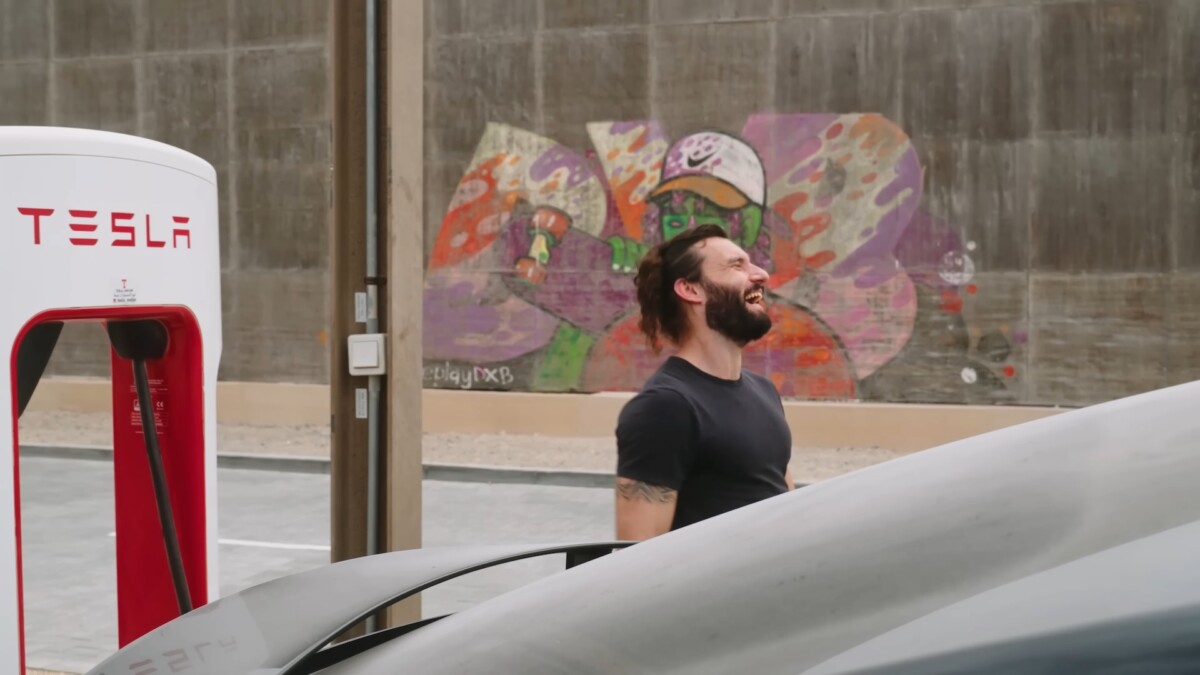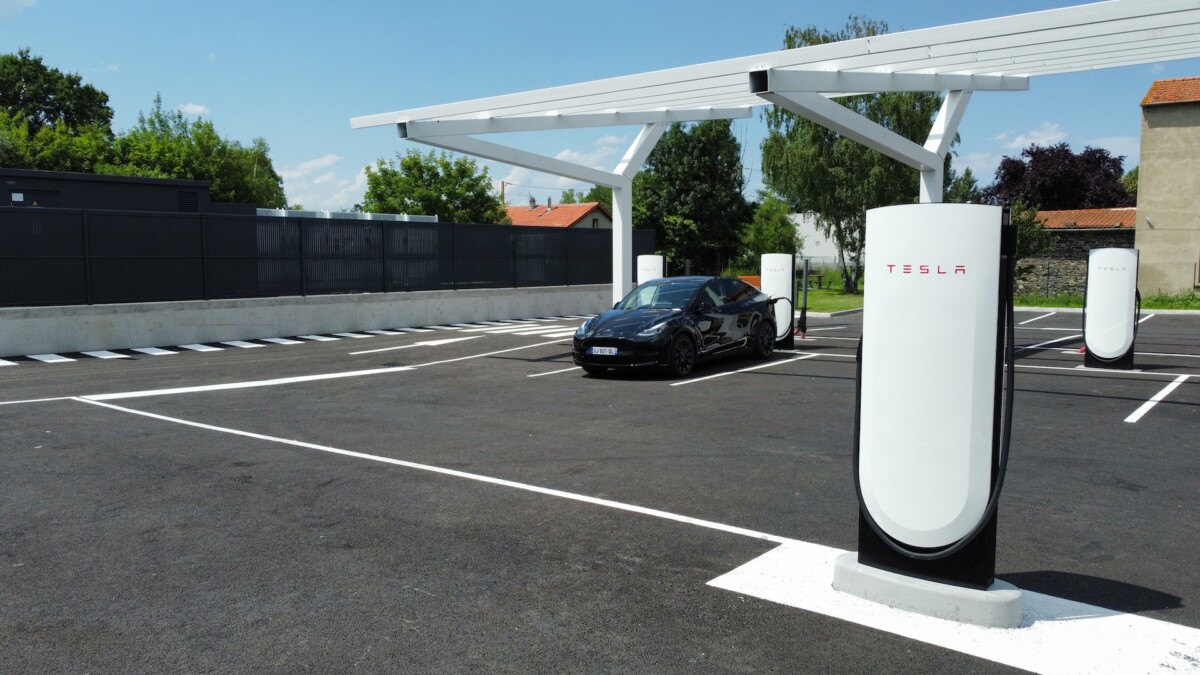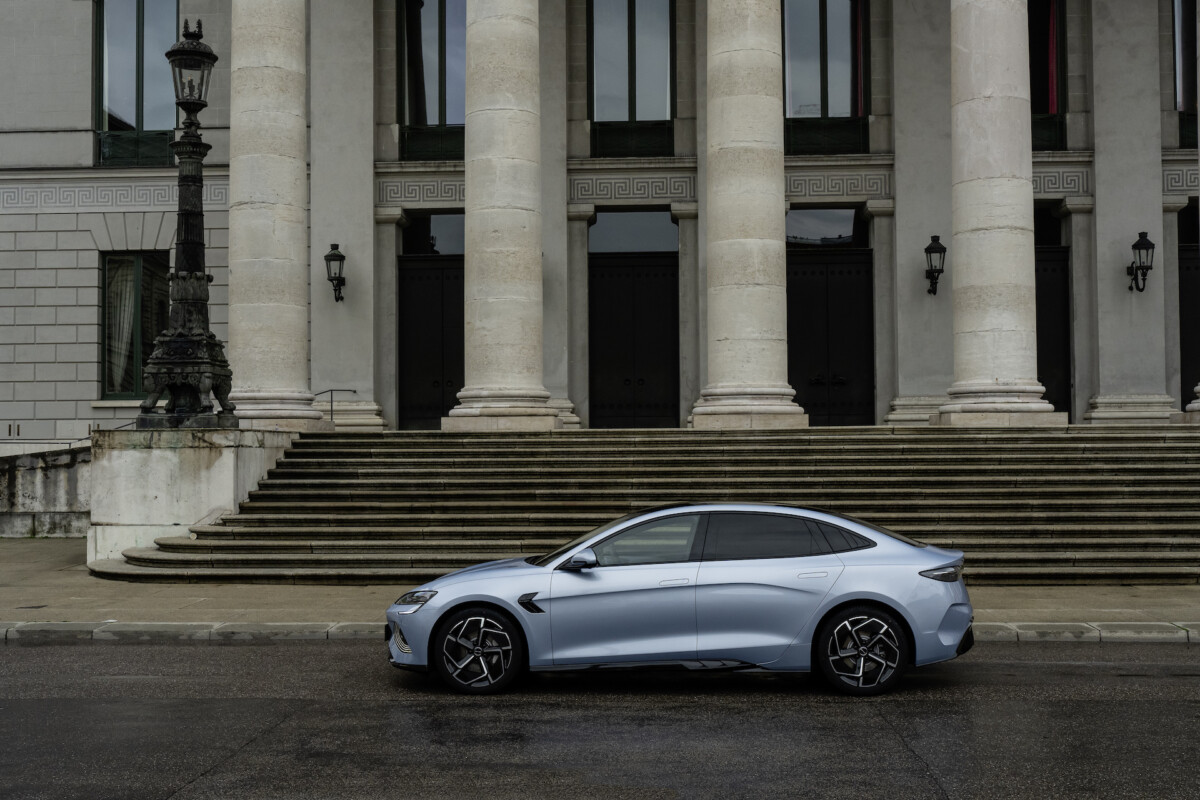Tesla recently put a new entry-level Model Y RWD on sale. Produced in Berlin, it incorporates a battery from its biggest competitor, BYD. But, without telling anyone, Tesla radically changed the charging speed of the battery of its electric car. We tried it and here are our measurements.
Tesla electric cars are renowned for their excellent performance/price ratio. Their autonomy and rapid recharging capacity are often highlighted during tests. And it must be recognized that with 25 minutes to go from 10 to 80% battery on a Supercharger, Teslas are among the good students.
However, Teslas integrate a 400 volt architecture, which is not as good as the 800 volts of certain electric cars. We can, for example, cite the Hyundai / Kia group which allows us to pass from 10 to 80% in 18 minutes on certain cars like the Kia EV6 and Hyundai Ioniq 6. But Tesla is catching up, and without fundamentally changing its architecture, although 800 volts is planned for the Cybertruck.
The famous BYD battery for the Tesla Model Y
Indeed, a few months ago, Tesla secretly introduced a new battery for the Tesla Model Y Propulsion (the entry-level version) produced in Berlin. Attention, this model is still rarebecause most of the Tesla Model Y Propulsion sold in Europe currently come from the Shanghai factory, which do not integrate the same battery.

Instead of the LFP (Lithium Iron Phosphate, cobalt-free) chemistry battery from CATL (the world leader in electric batteries), the Model Y Propulsion produced in Germany integrates a battery with LFP chemistry again, but from BYD… Tesla’s biggest competitor ! Initial feedback indicated a much faster charging speed than CATL batteries.
We had the chance to test a Tesla Model Y Propulsion manufactured in Berlin for a few hours and equipped with this famous battery. We obviously tried a recharge from 10 to 80% to find out if it was good and much faster. Here are the results.
A (really) faster recharge
First of all, let us point out that the recharge was carried out on a Supercharger v2 (the one in Lorient), which implies a maximum charging power of only 150 kW, compared to 170 kW on the Superchargers v3 with the “small” battery of the versions Propulsion (250 kW with large batteries). In other words, the flow rate from the terminal was not as high as the battery could handle. We will come back to this later.
We arrived at the terminal with 3% charge, after 1h30 of driving on the highway, and after having benefited from automatic preconditioning of the battery, to bring it to an optimal temperature, thanks to the route planner. Enough to accept full power from the moment of connection.
| You’re here | Model Y (Berlin) | Model Y (Shanghai) |
|---|---|---|
| 10 to 60% | 14 minutes | 15 minutes |
| 10 to 80% | 21.5 minutes | 25 minutes |
And we were pleasantly surprised: upon connection, the power increased to 145 kW (the maximum that the Supercharger v2 can provide). A power that the car held up to a charge level of 45%. This is unprecedented on a Tesla equipped with a “small” 60 kWh battery. Normally, the power drops well before, losing precious seconds (or even minutes) of charge.
In fact, we managed to complete the 10th at 80% (i.e. 70% energy recovered) in just 22 minutes. The 3 to 73% was achieved in 21 minutes and 30 seconds.

For comparison, the Tesla Model Y Propulsion of one of our journalists, manufactured in Shanghai with its CATL battery, requires 25 minutes, on a Supercharger v3, to go from 10 to 80%. The biggest difference in speed between the two is in the 60-80% range.
This is explained by the better optimized BYD battery charging curve. That is, full power is maintained for longer, and therefore the average power is higher.
This is not an isolated case
We estimate that recharging on a Supercharger v2, limited to 150 kW, made us lose between 2 to 3 minutes. Which would therefore give a recharge of 10 to 80% in 19 to 20 minutes with a terminal capable of delivering a power of 170 kW. And a 0 to 80% achieved in less than 25 minutes. Quite simply astonishing for a car with 400 volt architecture.

We looked at German forums like TTF, and the tests carried out on Superchargers v3 corroborate our figures. Customers rate 23 minutes for 0 to 80% and 20 minutes for 10 to 80%. Even more impressive: the 10 to 90% is achieved in 26 minutes, and 10 to 100% in 35 minutes !
On the first Tesla Model Y with NCM battery, it was rather necessary to count a good hour to recharge your electric car from 10 to 100% ! We therefore understand the whole issue of batteries, which can transform the experience of an electric car depending on the model chosen by the manufacturer.
BYD lagging behind for its electric cars
The funniest thing about this story is that BYD’s electric cars are not at all the fastest to charge. The current generation (the BYD Han, Tang, Atto 3, Dolphin and Seal) requires 37 minutes to go from 10 to 80% and 26 minutes from 30 to 80%. The cause: poorer management of the charging curve, potentially due to the cooling system and power management.
Let us point out that this German Tesla Model Y Propulsion seems to have a slightly lower capacity battery : 60 kWh compared to 61.5 kWh for the Chinese version in CATL battery. This represents a reduction in range of around 10 km on the BYD battery version. Or even 2.5% less battery. Which does not explain this difference in recharge time.

If you are interested in this special version of the Tesla Model Y Propulsion, the purchase is not going to be easy. Indeed, when you order a Tesla Model Y Propulsion, the American company randomly provides you with the version manufactured in Berlin, or the one produced in Shanghai. If you absolutely want the German version, you will have to look at the vehicles in stock on the Tesla site, and check that the URL includes “XP7” and not “LRW”.
Chinese manufacturers are coming in strong on fast charging, since there is already talk of 15 minutes to go from 10 to 80% on the new Zeekr 001. 10 minutes are already targeted for 2024, thanks to CATL and its Qilin 3.0 battery .
And given what Tesla manages to do with a 400 volt architecture in 2023, we now have no doubt about Volkswagen’s capacity to offer a recharge of 10 to 80% in 20 minutes, in 2025, for its future ID.2 affordable, with “only” a maximum power of 125 kW.
